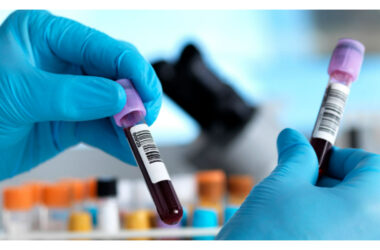Losing hair can be a distressing experience for both men and women, as thinning hairlines and receding crowns often take a toll on self-confidence. Fortunately, advancements in non-surgical treatments have made it possible to combat hair thinning and encourage regrowth, offering long-lasting results. This comprehensive guide delves into the most effective non-invasive options available today, focusing on proven success in restoring hair volume and promoting scalp health.
What Are the Most Effective Hair Loss Treatments for Long-Term Results?
Several treatments stand out for those seeking long-term hair restoration. Among the most successful are Low-Level Laser Therapy (LLLT), Platelet-Rich Plasma (PRP) Therapy, and hair growth medications such as Minoxidil and Finasteride.
Low-Level Laser Therapy (LLLT) employs therapeutic, low-intensity lasers to stimulate hair follicles and enhance cellular activity on the scalp. This treatment helps extend the hair’s growth phase (anagen), making it one of the most effective options for long-term use. Regular sessions promote stronger, thicker hair over time, particularly beneficial for those in the early stages of hair loss.
Platelet-Rich Plasma (PRP) Therapy utilizes the patient’s own blood plasma, rich in growth factors, to rejuvenate hair follicles. The plasma is injected into targeted areas of the scalp, stimulating natural hair growth and improving follicle density. Over several treatments, PRP has shown impressive long-term results, making it a go-to option for many looking to halt hair thinning and support regrowth.
Topical Minoxidil and Oral Finasteride have long been the cornerstones of effective hair loss treatment. Minoxidil works by increasing blood flow to the scalp, nourishing hair follicles, while Finasteride inhibits DHT (dihydrotestosterone), a hormone known to shrink hair follicles. These medications are effective over the long haul, especially when combined with therapies like LLLT or PRP.
How Do Non-Invasive Hair Loss Treatments Compare to Traditional Methods?
Non-invasive hair loss treatments are generally more convenient and carry fewer risks than traditional methods like hair transplants, which can be invasive and involve extended recovery times. While non-surgical treatments may take longer to produce visible results, they often have fewer side effects and less downtime. For instance, LLLT and PRP are painless, outpatient treatments that require minimal recovery time. These methods stimulate the scalp’s inherent potential for hair growth, offering a gradual yet lasting improvement.
Moreover, non-invasive treatments tend to be more cost-effective over time and are often customizable, providing a more natural, long-term solution to hair loss.
Which Hair Loss Treatments Are Best Suited for Different Stages of Hair Thinning?
The right treatment depends on how advanced the hair loss is.
- Early-stage hair thinning: Individuals in the early stages benefit most from Minoxidil and LLLT, as these solutions work best when hair follicles are still active but beginning to weaken. Regular use can help maintain hair density and prevent further loss.
- Moderate hair thinning: PRP therapy is effective when hair thinning becomes noticeable, boosting the natural growth cycle with growth factors from the patient’s blood.
- Advanced hair thinning: For those experiencing significant thinning, combining treatments like PRP with Minoxidil or Finasteride yields the best results, addressing multiple aspects of hair loss.
How Quickly Can You See Visible Improvements with Advanced Hair Loss Treatments?
The timeline for visible results varies by treatment. Most require a series of sessions for optimal results.
- LLLT: Visible improvements typically appear within 3 to 6 months of regular treatment.
- PRP Therapy: Noticeable improvements usually occur after the second or third treatment, with the best results evident between 6 and 12 months.
- Minoxidil and Finasteride: These medications can take several months to show results, with maximum benefits often visible after 4 to 6 months of continuous use.
What Are the Latest Innovations in Effective Hair Loss Treatments?
Recent innovations focus on enhancing natural hair growth using cutting-edge technology. Stem Cell Therapy, which involves harvesting stem cells from the patient and injecting them into the scalp, promotes cellular repair and rejuvenates hair follicles. Additionally, Exosome Therapy, which utilizes tiny vesicles containing proteins and growth factors, can enhance hair follicle function, offering concentrated healing properties.
Can Effective Hair Loss Treatments Be Combined for Better Results?
Yes, combining different treatments can significantly enhance results. For instance, pairing PRP with LLLT amplifies the benefits, as laser therapy stimulates follicles while PRP delivers a concentrated boost of growth factors. Similarly, combining PRP with Minoxidil or Finasteride targets both hormonal and regenerative aspects of hair loss.
Choosing the Most Suitable Hair Loss Treatment
Selecting the most suitable treatment depends on factors like the stage of hair thinning and individual health. Consulting with a specialist is essential to determine the best treatment combination, ensuring alignment with the specific cause and extent of hair loss.
In conclusion, today’s effective hair loss treatments offer numerous options for combating thinning hair and promoting regrowth. From LLLT and PRP to stem cell therapies and growth factor treatments, there are non-invasive solutions available for every stage of hair loss that provide long-term results without the risks associated with surgery.
















